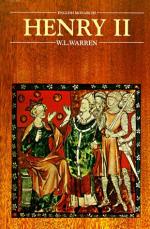In the absence of records we can only dimly trace the work of legal reform which was carried out by Henry’s legal officers; but it is plain that before 1164 certain great changes had already been fully established. A new and elaborate system of rules seems gradually to have been drawn up for the guidance of the justices who sat in the Curia Regis; and a new set of legal remedies in course of time made the chances of justice in this court greater than in any other court of the realm. The Great Assize, an edict whose date is uncertain, but which was probably issued during the first years of his reign, developed and set in full working order the imperfect system of “recognition” established by the Norman kings. Henceforth the man, whose right to his freehold was disputed, need but apply to the Curia Regis to issue an order that all proceedings in the local courts should be stopped until the “recognition” of twelve chosen men had decided who was the rightful owner according to the common knowledge of the district, and the barbarous foreign custom of settling the matter by combat was done away with. Under the new system the Curia Regis eventually became the recognized court of appeal for the whole kingdom. So great a mass of business was drawn under its control that the king and his regular ministers could no longer suffice for the work, and new judges had to be added to the former staff; and at last the positions of the two chief courts of the kingdom were reversed, and the King’s Court took the foremost place in the amount and importance of its business.
The same system of trial by sworn witnesses was also gradually extended to the local courts. By the new-fashioned royal system the legal men of hundreds and townships, the knights and freeholders, were ordered to search out the criminals of their district, and “present” them for trial at the Shire Court,—something after the fashion of the “grand jury” of to-day, save that in early times the jurors had themselves to bear witness, to declare what they knew of the prisoner’s character, to say if stolen goods had been divided in a certain barn, to testify to a coat by a patch on the shoulder. By a slow series of changes which wholly reversed their duties, the “legal men” of the juries of “presentment” and of “recognition” were gradually transformed into the “jury” of to-day; and even now curious traces survive in our courts of the work done by the ancestors of the modern jury. In criminal cases in Scotland the oath still administered by the clerk to jurymen carries us back to an ancient time: “You fifteen swear by Almighty God, and as you shall answer to God at the great day of judgment, you will truth say and no truth conceal, in so far as you are to pass on this assize.”




